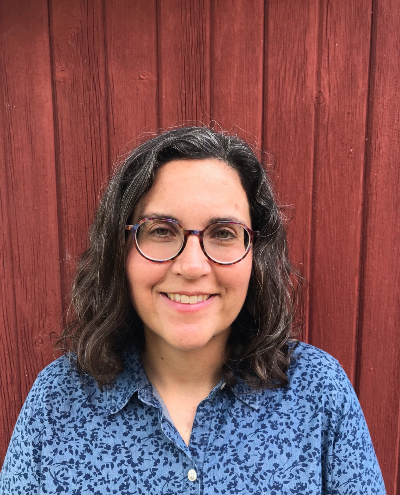
Lesley Knoll
Biographical Information
My research explores drivers of lake dynamics and aquatic-watershed connections. My research interests include nutrient fluxes, phytoplankton ecology, and lake ecosystem function (e.g., oxygen depletion, primary production). My lab uses long-term datasets, field and lab experiments, large-scale field surveys, and advanced aquatic sensors to address questions that bridge the fields of community and ecosystem ecology.
Current research themes include: 1) variable winter and spring conditions (e.g., ice cover, rainfall) and phytoplankton community dynamics and ecosystem-level processes, 2) consequences of long-term browning on lake ecosystems, 3) effects of resource subsidies on freshwater ecosystems, and 4) combined stressors of fish oxythermal habitat.
Education
- Ph.D., Ecology, Evolution, and Environmental Biology, Miami University (2011)
Selected Publications
- S.E. Hampton, S.M. Powers, H.A. Dugan, L.B. Knoll, B.C. McMeans, M.F. Meyer, C.M. O’Reilly, T. Ozersky, S. Sharma, D.C. Barrett, S. Chandra, J. Jansen, R.P. McClure, M. Rautio, G. Weyhenmeyer, X. Yang. 2024. Environmental and societal consequences of winter ice loss from lakes. Science 386: eadl3211. DOI:10.1126/science.adl3211
- L.B. Knoll, B. Fry, N.M. Hayes, and H.M. Sauer. 2024. Reduced snow and increased nutrients show enhanced ice-associated photoautotrophic growth using a modified experimental under-ice design. Limnology and Oceanography 69: 203-216. https://doi.org/10.1002/lno.12469
- Jones, J.R., K. Pope-Cole, D.V. Obrecht, J.D. Harlan, L.B. Knoll, J.A. Downing. 2023. Carbon and nutrient sequestration in small impoundments: a regional study with global implications. Inland Waters 13: 374-387.
- Reinl, K.L., T.D. Harris, R.L. North, P. Almela, S.A. Berger, M. Bizic, S.H. Burnet, H.-P. Grossart, B.W.Ibelings, E. Jakobsson, L.B. Knoll, B.M. Lafrancois, Y. McElarney, A.M. Morales-Williams, U. Obertegger, I. Ogashawara, M.C. Paule-Mercado, B.L. Peierls, J.A. Rusak, S. Sarkar, S. Sharma, J.V. Trout-Haney, P. Urrutia-Cordero, J.J. Venkiteswaran, D.J. Wain, K. Warner, G.A. Weyhenmeyer, and K. Yokota. 2023. Blooms also like it cold. Limnology and Oceanography Letters 8: 546-564. https://doi.org/10.1002/lol2.10316
- Rogers, M.N., T.J. Williamson, L.B. Knoll, and M.J. Vanni. 2022. Temporal patterns in sediment, carbon, and nutrient burial in ponds associated with changing agricultural tillage. Biogeochemistry 159: 87-102.
- Hrycik, A.R., P.D.F. Isles, R. Adrian, M. Albright, L.C. Bacon, S.A. Berger, R. Bhattacharya, H.P. Grossart, J. Hejzlar, A.L. Hetherington, L.B. Knoll, A. Laas, C.P. McDonald, K. Merrell, J.C. Nejstgaard, K. Nelson, P. Noges, A.M. Paterson, R.M. Pilla, D.M. Robertson, L.G. Rudstam, J.A. Rusak, S. Sadro, E.A. Silow, J. Stockwell, H. Yao, K. Yokata, and D.C. Pierson. 2021. Earlier winter/spring runoff and snowmelt during warmer winters lead to lower summer chlorophyll-a in north temperate lakes. Global Change Biology 27: 4615-4629.
- Stetler, J.T., L.B. Knoll, C.T. Driscoll, and K.C. Rose. 2021. Lake browning generates a spatiotemporal mismatch between DOC and limiting nutrients. Limnology and Oceanography Letters 6: 182-191.
- Jane, S.F., G.J.A. Hansen, B.M. Kraemer, [and others including L.B. Knoll]. 2021. Widespread deoxygenation of temperate lakes. Nature 594: 66-70.
- Knoll, L.B., S. Sharma, B.A. Denfeld, G. Flaim, Y. Hori, J.J. Magnuson, D. Straile, and G.A. Weyhenmeyer. 2019. Consequences of lake and river ice loss on cultural ecosystem services. Limnology and Oceanography Letters 4: 119-131
- Knoll, L.B., C.E. Williamson, R.M. Pilla, T.H. Leach, J.A. Brentrup, and T.J. Fisher. 2018. Browning-related oxygen depletion in an oligotrophic lake. Inland Waters 8: 255-263.
Courses Taught
- BIO 209/209W: Fundamental of Ecology
- BIO 463W/563: Limnology
- BIO 491: Seminar in Biology
- BIO 672: Ecosystem and Global Ecology
- BIO 710: Graduate seminar